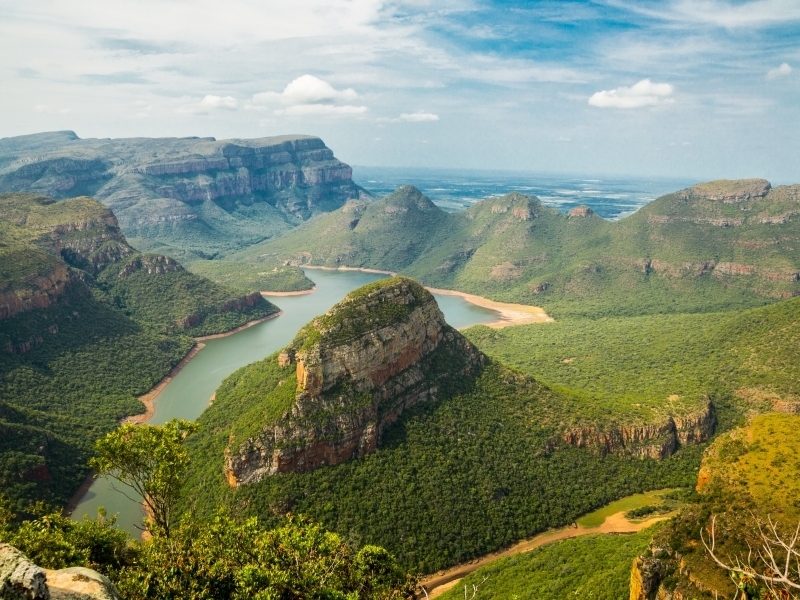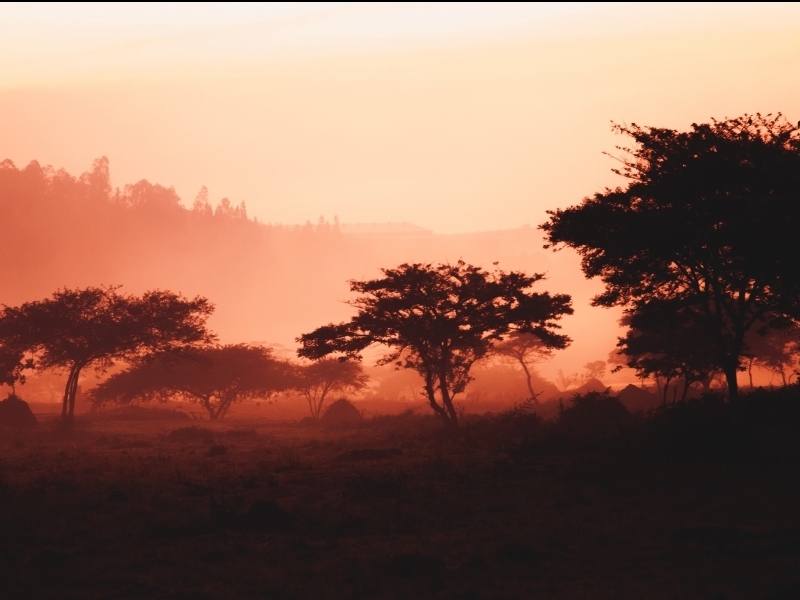News and Testimonials

Just for Adventurers: 8 Incredible Walking Safaris Around the World
They are almost always done protected by vehicles and fences. However, walking safaris are presented as the best alternative for those seeking more adrenaline or simply getting to know the environment up close.
For most travelers, a safari is a once-in-a-lifetime trip, an epic splurge underscored by ultra-luxurious accommodations, sublime food, sunsets and guided wildlife viewing from the comfort of an oversized 4x4. But this classic narrative is changing in select destinations as game drives compete with a growing number of action-packed walking safaris, inviting travelers to become one with the animal kingdom. Relying on highly trained naturalists, adventurers can now engage in conscious encounters with some of the world's most incredible animals beyond the confines of a Land Rover.
1. Mountain gorillas in the Volcanoes National Park, Rwanda
In the northern reaches of Rwanda, 12 customary gorilla troops inhabit the mystical mist-shrouded mountains of Volcanoes National Park. Through special permits, visitors can embark on guided hikes in search of the largest living primates on Earth, ultimately resulting in an hour of face-to-face time with these critically endangered animals. With newborns in some troops, multiple silverbacks in others, each family is unique in size and dynamics. And given the constant movement of gorillas within this land of plenty, the hikes range from an easy two-hour drive along the hills to a near-vertical half-day climb through dense, nettle-covered forest, No two are the same.
2. African icons in South Luangwa National Park, Zambia
Zambia's South Luangwa National Park is considered the birthplace of the African walking safari, begun around the 1960s, and is arguably still the best place to participate in adrenaline-pumping days of communing with elephants, sighting of lions, roam among giraffes and have lunch with zebras. Of note, The Bushcamp Company operates six intimate tent camps throughout the national park: Bilimungwe, Chamilandu, Zungulila, Kapamba, Kuyenda and Chindeni, where walking safaris top the daily agenda. Additionally, guests can travel between five of the campsites as extended walking safaris, thus traversing as much of South Luangwa's diverse terrain as possible while maximizing wildlife sightings.
3. Polar bears in Hudson Bay, Canada
Although climate change has affected polar bears globally, there is still one region where the Arctic's most famous residents still thrive: western Hudson Bay, north of Churchill, Canada. Here, a healthy resident population of roughly 1,000 polar bears rule the tidal flats and grasslands, and one provider, Churchill Wild, has the exclusive permissions to track these apex predators on foot. Churchill Wild offers walking safaris twice a day, starting from a trio of aerial shelters, to see the furry white giants. Although bears have a reputation for being ferocious, there has not been a single injury to either humans or bears, thanks to the intelligence and skills of experienced guides.
4. Meerkats in the Kalahari desert, southern Africa
Bursting with personality and cuteness, meerkats are as superstars in real life as they are on television. Among the prolific colonies scattered throughout the Kalahari desert (which transcends Botswana and South Africa), a handful have become accustomed to human presence over the decades, allowing us to observe their daily routines of foraging, burrows, babysitting and predator hunting, all while enjoying the symphony of their vocalizations.
5. The Big Five at andBeyond Phinda Private Game Reserve, South Africa
Conceived in 1991, the andBeyond company began as an ambitious project to revitalize overgrazed farmland in KwaZulu-Natal, reintroduce the region's original biodiversity, and develop a new archetype for ecotourism. Thirty years later, this pilot project, andBeyond Phinda Private Game Reserve, has become a veritable African Garden of Eden, riddled with the Big Five and the rest of the cast of the “Lion King”. From any of the six Phinda design-driven safari lodges, fascinating walking safaris are undertaken, tailored to the species' personal goals, fitness levels, and approximate duration. You can choose between lighter “nature walks” or more rigorous “big game hikes”, delicately following elephants and rhinos, often with a breathtaking big cat encounter along the way.
6. Primates in Nyungwe Forest National Park, Rwanda
The forested highlands of western Rwanda bewildering as the mist hits at dawn and the sounds and sights of nature ambush the senses. Here, the enchanted and biodiverse Nyungwe Forest National Park is home to 13 species of primates, including the elusive chimpanzee and the gregarious Angolan colobus monkey, which can be seen via walking safaris. Chances of seeing chimpanzees are best when foraging in the trees during the early hours of the morning. To access their home deep within the forest, visitors must wake up at 3:45 a.m. and prepare for a highly challenging yet deeply rewarding hike alongside park rangers and trackers. Much easier are the walks to see the photogenic Angolan colobus monkeys.
7. Greater one-horned rhinoceros in Chitwan National Park, Nepal
In the early 1970s, Nepal established its first national park, Chitwan National Park, to prevent the country's dwindling one-horned rhino population from disappearing altogether. Since then, strong conservation efforts have helped the park's numbers rebound from less than 200 to more than 600 individuals and counting. While it received praise from the conservation community, this pioneering park also caught the attention of Taj Safaris, which had successfully pioneered a luxury tiger safari circuit in neighboring India. In 2017, the brand debuted at a hostel on the outskirts of Chitwan, Meghauli Serai, A Taj Safari, mainly focused on rhinoceros watching. Today, it is possible to embark on daily adventures in search of these leviathans, by jeep, canoe, boat, or on foot, with excellent sighting possibilities at all times.
8. Great Migration in Northern Serengeti, Tanzania
Many wildlife enthusiasts schedule their East African safari to witness the drama of the annual Great Migration, during which millions of wildebeest, zebra and gazelle cross the Mara River in search of fresh grass and water. While vehicle overcrowding remains a problem across much of Kenya's Masai Mara, the Tanzanian side of the Mara River generally reveals a more intimate migration experience (read: fewer people and cars). Even better? Located near this waterfront action in northern Serengeti, Asilia Africa's Sayari Campground allows guests to achieve a completely different vantage point of the Great Migration (June to October) - the rare opportunity to explore the shores of the Mara river on foot.










